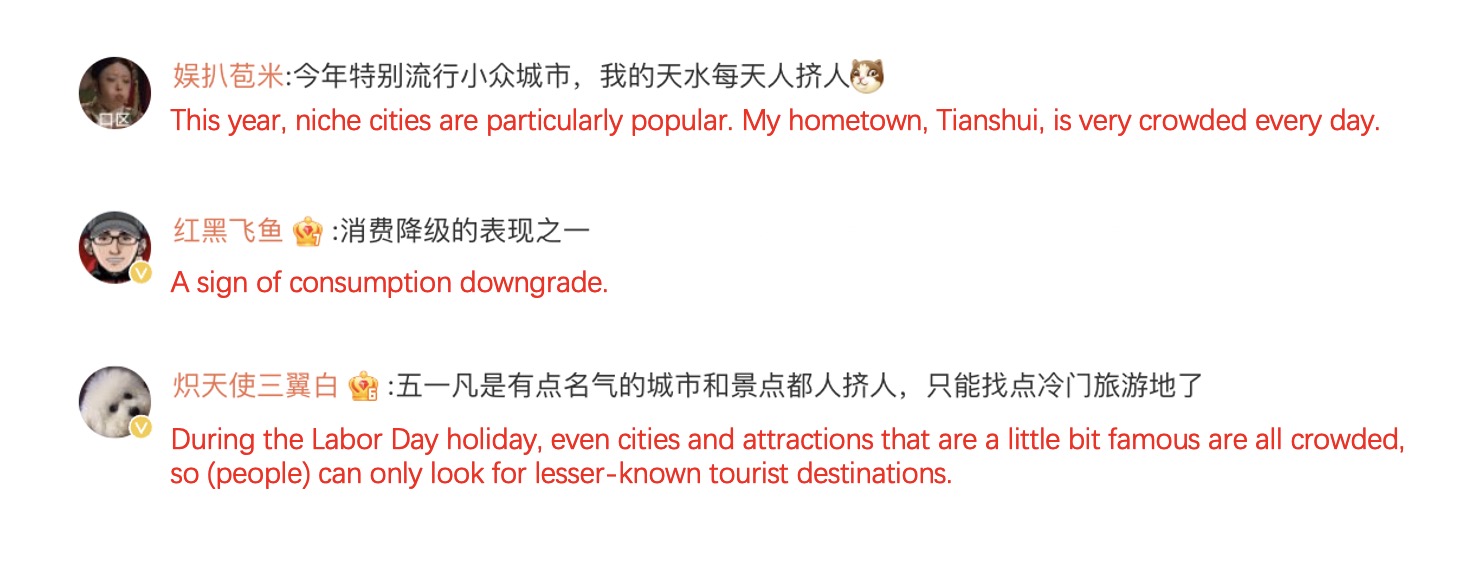The Labor Day holiday is one of China’s most important public holidays, during which many people engage in travel spending in order to release their pent-up consumption and travel demands. Therefore, the Labor Day holiday serves as a strong indicator for the tourism economy in China.
According to China’s Ministry of Culture and Tourism, during this year’s Labor Day holiday, there were an estimated total of 295 million tourists domestically as well as a total spending of nearly RMB1,669 billion (around USD230.91 billion), marking an increase of 7.6% and 12.7% from last year, respectively. Notably, rural tourism saw a total of 172 million visitors this year, generating a total revenue of RMB51.82 billion (around USD7.17 billion), which increased by 8.9% and 12.3% compared to the previous year.
This phenomenon has triggered heated discussions under the hashtag #county-level tourism booms during the Labor Day holiday# (五一假期县域旅游火了) on Weibo, garnering 28 million views in the 2nd week of May. In fact, “reverse tourism (反向旅游)” has emerged as a trend among young people in China that originated as early as 2022, referring to the phenomenon where some young individuals opt for lesser-known tourist towns to escape the hustle and bustle of big cities and enjoy a peaceful vacation. This year during the Labor Day holiday, county-level tourism in China went viral on social media. Such niche places include those in southern provinces of China such as Zhejiang, Jiangsu, Fujian, Yunnan, etc.

On the rising popularity of “county-level tourism,” most netizens reacted quite positively, attributing this phenomenon to the diversity of experiences the sinking market offers. “The cuisine in small towns tends to be authentic and traditional, unlike those in major tourist attractions,” a netizen commented.
County-level tourism in China goes viral among young tourists
- Domestic tourism in China saw significant growth with 7.6% more tourists and a 12.7% increase in spending, reaching RMB1,669 billion (USD230.91 billion). Rural tourism also thrived, attracting 172 million visitors and generating RMB51.82 billion (USD7.17 billion).
- The trend of “reverse tourism” among young Chinese, where they visit lesser-known towns for a peaceful vacation, gained momentum during the Labor Day holiday, leading to viral discussions under the hashtag #county-level tourism booms during the Labor Day holiday# on Weibo, with 28 million views.
- Netizens responded positively to the rising popularity of county-level tourism, praising the authentic and traditional experiences offered by smaller towns compared to major tourist attractions.





